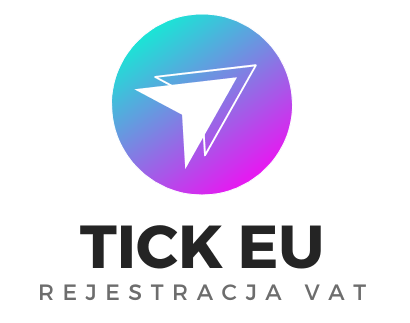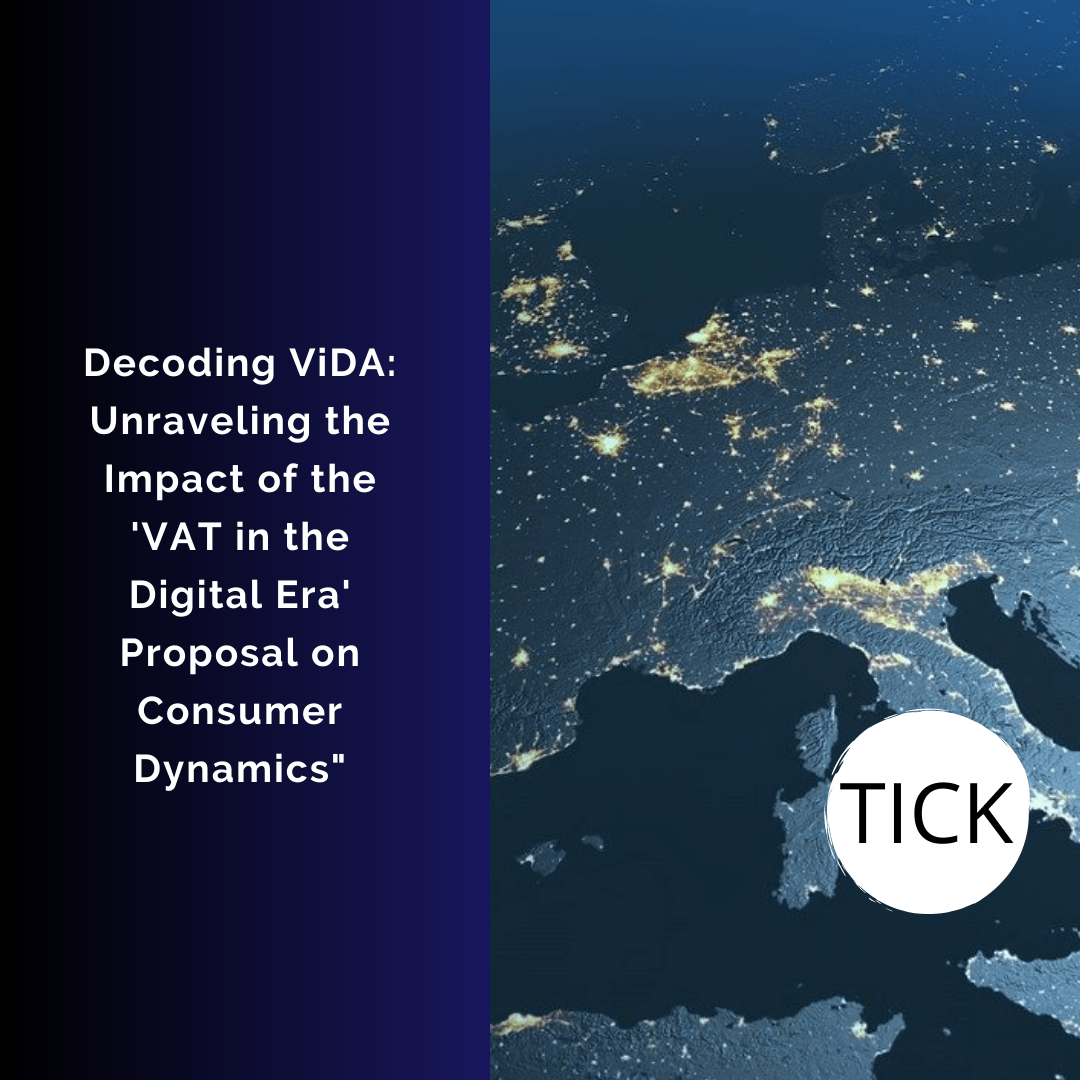Introduction to VAT in the digital era (ViDA), announced by the European Commission in December 2022, has sparked a true revolution in the business environment. This proposal marks a significant breakthrough that, if approved, could revolutionize the structure of e-invoicing and e-reporting in the coming years. This proposal is decidedly innovative, and it is anticipated to be a major catalyst for change.
This article presents a critical analysis of the key elements of the proposal, its impact on businesses, and its significance for the infrastructure of e-invoicing and e-reporting. Additionally, potential limitations will be discussed, and sincere suggestions for possible improvements will be proposed.
Why is ViDA important, and what consequences will it have?
The development of e-invoicing in Europe is gaining momentum, and not without reason. It offers numerous benefits, ranging from error reduction and the reduction of manual labor to the simplification of reconciliation processes with suppliers (AP). In the age of growing environmental awareness, e-invoicing can also contribute to reducing environmental impact and lowering compliance costs.
The ViDA proposal goes a step further, establishing e-invoicing as a standard, not an exception, in all EU member states from January 1, 2028. In a broader context, while Italy has already implemented mandatory electronic invoicing, other EU countries are working on their own mandates. According to the proposal, e-invoicing will become mandatory in intra-community transactions between all 27 EU member states, representing a significant step towards the ubiquity of e-invoicing.
The ViDA proposal not only stimulates the development of e-invoicing but also brings additional social benefits, such as increased automation, new employment opportunities, and expanded economic benefits. Automation becomes an integral part of supply chain financing by establishing enhanced tax practices and procedures in business operations. The connection of electronic invoicing with the broader economic infrastructure is evident, emphasizing the importance of e-invoicing in a broader trade and fiscal context.
In addition to the e-invoicing obligations, the proposal introduces harmonized requirements for digital reporting (DRR) from January 1, 2028, in all EU member states. This means that businesses will have to report all intra-community transactions to the central VIES database. DRR effectively replaces the need for summaries. These extensive measures require consideration of the main goals of the proposal.
One of the key goals is to eliminate the VAT gap, which reached an astronomical amount of €93 billion in 2020. DRR is an intriguing element of the proposal, introducing harmonized reporting obligations in all EU member states. In practice, it is known that a large portion of intra-community transactions will not be subject to VAT due to reverse charge mechanisms and zero VAT rates, and only time will tell if reducing the VAT gap will become a reality. On the other hand, the Italian obligation of e-invoicing has achieved some success in reducing the VAT deficit in the country.
ViDA and the “withdrawal” of the derogation process
Currently, EU member states seek exemption from the provisions of the EU directive, treating paper and electronic invoices on par with mandatory electronic invoicing. ViDA eliminates the need to apply for exemption, starting from January 1, 2024.
The derogation process is complex, lengthy, and fraught with difficulties. Although the limitations of this process are clear, it is essential for regulatory frameworks to provide companies with enough time to understand the pressure associated with the new requirement. ViDA poses a serious risk to businesses, imposing unrealistic, costly, and burdensome obligations and deadlines. Even in the optimal scenario where each EU member state implements mandates within reasonable time frames, there is no certainty that it can be enforced.
It seems that the preferred solution would naturally extend over at least 12 months, allowing companies proper preparation for the upcoming changes.
The variable definition of e-invoice – and why it matters
ViDA distinguishes between digital invoices (e.g., PDF) and electronic invoices (containing structured information). According to the proposal, the former will become unnecessary as PDF files will no longer fall within the definition of electronic invoices.
This is an interesting phenomenon. The Commission must now clarify what this entails – Tungsten Network, like many e-invoicing service providers, does not consider a PDF file as a full-fledged electronic document. Moreover, when governments impose obligations in e-invoicing, a PDF file is rarely equivalent to an e-invoice. Tungsten additionally certifies the PDF file through a digital signature to prove authenticity and integrity. The introduction of the ViDA proposal means the end of this practice while still requiring the use of digital signatures for structured invoices, even though both formats serve the same purpose. This poses several challenges.
Firstly, from an ideological standpoint, PDF often serves as a legal document and is a significant byproduct of the e-invoicing process. The shift to a structured invoice will undoubtedly face resistance in the business community.
Secondly, from a practical perspective, the transition to a structured invoice entails the need for significant transformations in AP and AR processes, including additional processing resources and structures. Paradoxically, this undermines the key benefits of e-invoicing, as approval processes require documents understandable to humans.
Importantly, the shift from digital to structured invoices may disproportionately affect SMEs. Changes will impact businesses differently, given their varied processing capabilities and dependence on international trade. These conclusions raise certain ethical concerns. It is expected that the impact of the proposal will be fairly distributed across the wider community of entrepreneurs. The proposal does not impose fundamental restrictions on recognizing a PDF file as a legal document.
However, the e-invoicing mandate poses a problem – the structured invoice must function as a legal document. Again, SMEs will bear the consequences here. Whether this will lead to calls for a phased implementation will be an interesting phenomenon after social consultations.
ViDA and the degradation of the reconciliation model
Harmonization takes various forms, mainly through categories of e-invoicing models introduced by individual countries. Characteristic reconciliation models require “green light” from tax authorities before exchanging with the buyer, usually involving a multi-stage verification. ViDA promotes withdrawing from the use of reconciliation models, ultimately leading to unrestricted data flow. By limiting the ability of countries to apply reconciliation models, this initiative naturally narrows the scope of electronic invoicing models, resulting in increased harmonization. In practice, although the elimination of reconciliation models may still cause some discrepancies in e-invoicing, this can only be addressed by introducing a unified e-invoicing model, which was not unequivocally endorsed in the presented proposal. Additionally, this proposal raises several fundamental questions, such as the definition of “authorization,” and consequently, the Commission is obligated to clearly define the meaning of customs clearance as a specific concept.
The proposal also raises significant questions about the real intentions behind customs clearance. In practical terms, a minimal set of data controls is not only logical but also necessary. These controls play a crucial role in reducing the number of non-compliant invoices, constituting a significant element of the e-invoicing process. Therefore, their omission may make it seem illogical and contrary to the intended effects in terms of facilitating smooth data exchange supported by the presented proposal.
It is almost certain that businesses across the continent associate customs clearance with e-invoicing. Settlement, regardless of the definition, will become a key component of many e-invoicing models, such as those in France, Poland, and Italy. In practice, settlement differs from VAT control, where validations ultimately confirm the basic elements of the invoice. Of course, this raises questions about setting boundaries. Defining these boundaries will not be an easy task for the Commission.
This, in turn, leads to further questions – if settlement models are effectively abolished, what constitutes a reasonable alternative or compromise? The practical implementation of ViDA can be achieved through the application of a five-corner model. E-invoicing using a decentralized transaction control model can be a process where data exchange between businesses is unrestricted, regulated, and trustworthy. Typically, this involves a strategy where the sender and receiver are registered on different service provider platforms, with the fifth element being a government platform.
This model has numerous benefits: comprehensive automation, greater flexibility, and improved data quality, as well as the ability to connect to an access point for each taxpayer. Ultimately, all markets, regardless of technological constraints and processing size, can benefit from this e-invoicing system, introducing a greater sense of equality in the implementation process.
ViDA for buyers: a step forward or a step back?
While the proposal poses a challenge to countries employing billing models, it simultaneously generates unique difficulties for purchasers.
Member states may assume sharing electronic invoice data in any format, which becomes problematic when considering adherence to European standards. Flexibility entails variance, which can be troublesome. Particularly concerning is that as of January 1, 2024, ViDA eliminates the need for buyers to accept e-invoices. While this may incentivize the expansion of e-invoicing, which is undoubtedly beneficial, it also leaves buyers open to receiving invoices in unfamiliar formats, compelling them to accept. Importantly, the proposal remains silent on specific invoice formats, further complicating the situation. The development of e-invoicing is crucial for tax practice automation and “digitization,” yet sustaining this growth in a way that enables buyers to effectively process e-invoices becomes a priority.
Additionally, starting January 1, 2028, businesses must fulfill the real-time reporting obligation for all intra-community B2B transactions within two working days of the invoice issuance date. In the current situation, where a 45-day period is permissible, this schedule seems unrealistic, impractical, and faces widespread market resistance. Therefore, finding a compromise would be a more reasonable solution.
Buyers encounter further challenges. The abolition of batch invoices, which consolidate invoice data over several weeks or months, stems from the emphasis on reporting individual transactions instead of aggregated data. While this aimed to reduce VAT-related fraud, the consequences include massive processing that can significantly disrupt business operations and incur additional economic costs. The implications may even extend beyond businesses, affecting tax authorities, increasing the burden of introducing additional data into declarations related to VAT, and potentially increasing the frequency of audits. Despite the clear motivation for this measure, it is challenging to understand why the Commission did not address this issue or at least consider alternatives.
ViDA puts data quality in focus – ally or adversary?
While reclassifying PDF files poses a challenge for companies, heightened data quality control becomes another point of contention. New regulations impose more rigorous standards on data quality in invoices from January 1, 2028, with suggested additions of new fields, such as payment and bank information. This is not arbitrary; these areas are inseparably linked to VAT-related crimes that the regulations aim to curb. However, for companies, this represents an additional burden, forcing them to meet requirements for additional data that may be challenging to obtain, thereby affecting various stages of the e-invoicing process in a short time.
Invoices typically do not include payment information, making it challenging to acquire such data. There are even security-related aspects that may discourage placing payment information on invoices. Moreover, it should be noted that these changes will affect all EU member states, many of which have been using traditional invoice content for years and have limited exposure, if any, to e-invoicing and e-reporting obligations.
Final considerations
This proposal deserves explicit praise as it eliminates the risk that the electronic invoicing process will remain concealed across the European Union and be exposed to further fragmentation.


